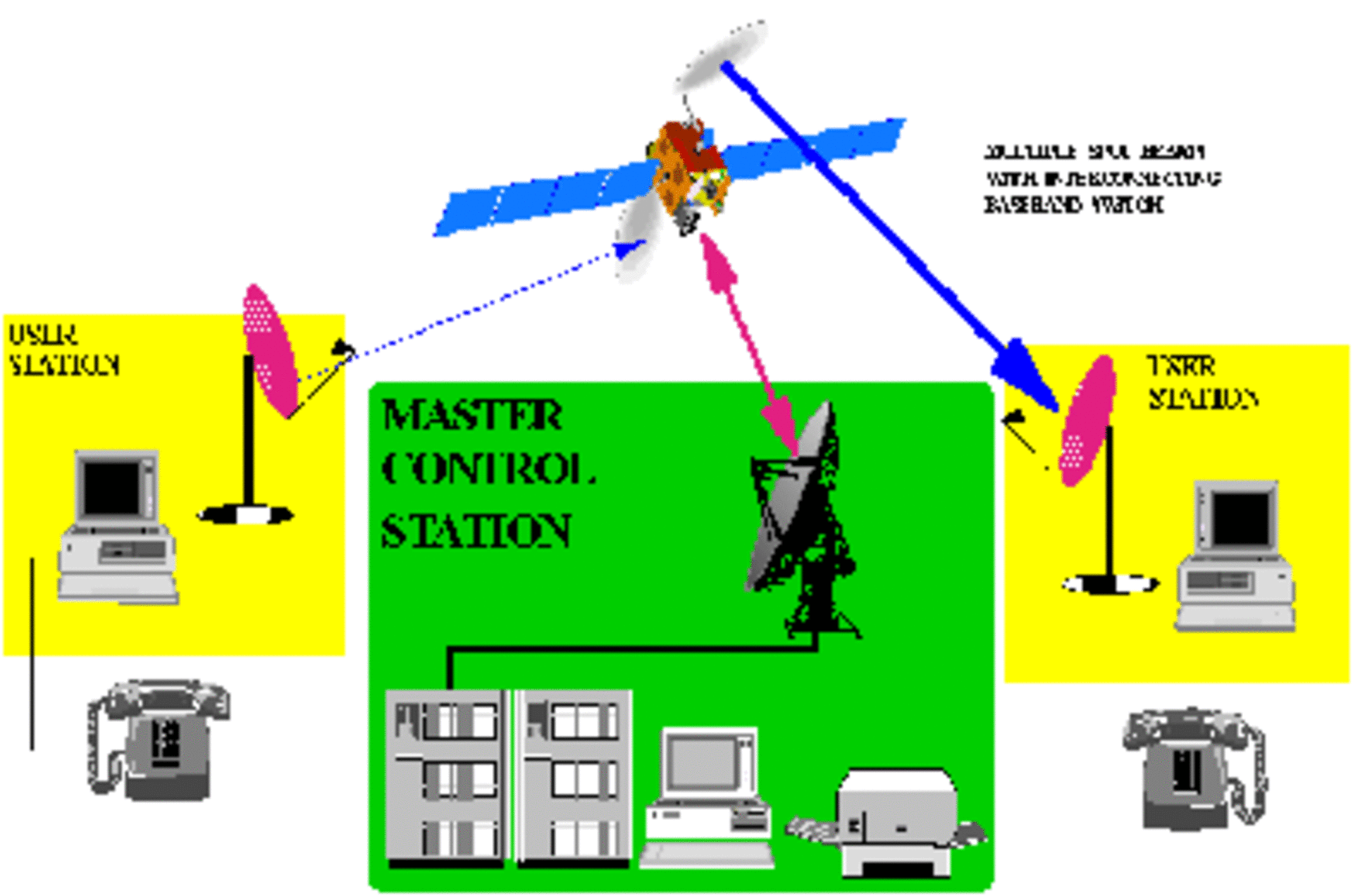Onboard processing
A switching board in the sky
Communications satellites orbiting high above the Earth are going to be the distribution depots of the future for multimedia and internet services.
High bandwidth services will become the norm and it is already recognised that the terrestrial network, even with the advantages of optical fibre technology allowing very large bandwidth availability, cannot alone meet the predicted requirements.
The development of the technology guarantees that the processing power of the equipment that either residential or corporate users have increases with phenomenal speed (according to Moore law's duplication takes place every 18 months).
At the same time the capacity of the backbone of the public telecommunication networks increases even more dramatically through the deployment of optic fibre systems between the main nodes. However there is a gap in the system: the access to the network. Indeed the access is limited by the capacity of the telephone wires and by the level of occupancy of our server.
Large investments and technical developments are therefore required to bridge the final section between the local exchange and the customer. It is here that satellites can play a very important role.
But to do so they will require sophisticated onboard processing systems – ways and means of controlling the incoming information and then redistributing it. The satellite increases its capacity optimises its design, multiplies the amount of coverage zones, data and voice are received, demodulated, routed, modulated and transmitted to their destination. The satellite is not any longer a dumb repeater in the sky. The satellite has become a node of the global information infrastructure.
The goal of this area of work in ESA Telecommunications consists precisely on the development of onboard processing systems to demonstrate high speed data, telephone communications and video services to users and network operators equipped with small ground stations. It involves satellite instrumentation and ground stations for system control and user traffic, as well as developing critical hardware components, including onboard digital switches, frequency-hopping modulators and multi-channel demodulators.















 Germany
Germany
 Austria
Austria
 Belgium
Belgium
 Denmark
Denmark
 Spain
Spain
 Estonia
Estonia
 Finland
Finland
 France
France
 Greece
Greece
 Hungary
Hungary
 Ireland
Ireland
 Italy
Italy
 Luxembourg
Luxembourg
 Norway
Norway
 The Netherlands
The Netherlands
 Poland
Poland
 Portugal
Portugal
 Czechia
Czechia
 Romania
Romania
 United Kingdom
United Kingdom
 Slovenia
Slovenia
 Sweden
Sweden
 Switzerland
Switzerland



























